Jiu Jitsu vs Brazilian Jiu Jitsu – Which One Fits Your Fighting Style?
Table of Contents
- Introduction
- Historical Background
- Origins of Jiu-Jitsu
- Evolution into Brazilian Jiu-Jitsu
- Philosophical Differences
- Martial Arts Philosophy
- Approach to Combat
- Techniques and Training Methods
- Jiu-Jitsu Techniques
- Brazilian Jiu-Jitsu Techniques
- Training Practices and Sparring
- Uniforms and Belts
- Traditional Jiu-Jitsu Attire
- Brazilian Jiu-Jitsu Attire
- Belt Ranking Systems
- Applications in Self-Defense
- Practical Self-Defense
- Effectiveness in Real-World Scenarios
- Sport and Competition
- Jiu-Jitsu in Competition
- Brazilian Jiu-Jitsu in Sport
- Cultural Impact and Popularity
- Influence in Japan
- Global Spread of Brazilian Jiu-Jitsu
- Modern Adaptations and Future Trends
- Innovations in Techniques
- The Future of Both Arts
- Conclusion
Introduction
Martial arts have captivated the human imagination for centuries, blending physical prowess with philosophical depth. Among the myriad of martial arts that have developed over time, Jiu-Jitsu and Brazilian Jiu-Jitsu stand out for their unique techniques and philosophies. Although they share a common heritage, the two arts have diverged significantly, each developing its own identity and approach to combat. This blog post delves into the nuances of Jiu-Jitsu and Brazilian Jiu-Jitsu, examining their historical roots, training methods, techniques, and cultural impact. Whether you are a martial artist or a curious observer, understanding the distinctions between these two arts will deepen your appreciation for their contributions to the world of martial arts.
Historical Background
Origins of Jiu-Jitsu
Jiu-Jitsu, also known as Jujutsu or Jujitsu, is one of the oldest martial arts, with origins tracing back to the samurai era in feudal Japan. It developed as a battlefield art, used by warriors who were often disarmed during combat. The primary focus was on using an opponent’s energy against them, leveraging techniques that involved joint locks, throws, and grappling to neutralize threats. Early forms of Jiu-Jitsu were practical and brutal, designed to incapacitate or kill an opponent quickly in the chaos of battle. As Japan entered periods of peace, Jiu-Jitsu evolved, incorporating more elements of self-defense and personal development.
Evolution into Brazilian Jiu-Jitsu
The transition from traditional Japanese Jiu-Jitsu to Brazilian Jiu-Jitsu (BJJ) began in the early 20th century when Jigoro Kano, the founder of Judo, modified Jiu-Jitsu techniques to create a more sport-oriented and less lethal martial art. Mitsuyo Maeda, a student of Kano, played a pivotal role in bringing these techniques to Brazil. Maeda’s teachings found fertile ground in the Gracie family, particularly through Carlos and Helio Gracie, who adapted and refined the techniques to create Brazilian Jiu-Jitsu. Unlike traditional Jiu-Jitsu, which included strikes and standing techniques, BJJ focused heavily on ground fighting, emphasizing control and submissions. This new approach revolutionized martial arts and laid the foundation for BJJ as we know it today.
Philosophical Differences
Martial Arts Philosophy
The philosophical underpinnings of Jiu-Jitsu and Brazilian Jiu-Jitsu reflect their historical contexts and cultural origins. Traditional Japanese Jiu-Jitsu embodies the samurai code of Bushido, which emphasizes honor, discipline, and self-control. It is not just a means of combat but a path to personal improvement and spiritual growth. Practitioners are taught to respect their opponents, maintain humility, and strive for perfection in their techniques and character. Additionally, if you’re keen on understanding the differences between Brazilian Jiu-Jitsu and Japanese Jiu-Jitsu, this informative piece on Brazilian Jiu Jitsu vs Japanese Jiu Jitsu provides valuable insights.
In contrast, Brazilian Jiu-Jitsu, while also valuing respect and discipline, places a stronger emphasis on practicality and effectiveness. The philosophy of BJJ is rooted in adaptability and resilience. The art encourages practitioners to remain calm under pressure, think strategically, and find creative solutions to problems. This mindset is reflected in the rolling sessions, where students spar live and learn to apply techniques in dynamic, real-world scenarios.
Approach to Combat
The approach to combat in Jiu-Jitsu and Brazilian Jiu-Jitsu highlights their fundamental differences. Traditional Jiu-Jitsu techniques are designed to end confrontations quickly, often through devastating throws, joint locks, and strikes. The art trains practitioners to defend against armed and unarmed attackers, making it highly versatile and applicable in various situations. The standing techniques and quick takedowns are integral to its practice, reflecting its origins on the battlefield.
Brazilian Jiu-Jitsu, however, emphasizes ground control and submissions. The core idea is that a smaller, weaker person can effectively defend against a larger opponent by using leverage and technique. BJJ practitioners focus on taking the fight to the ground, where they can neutralize an opponent’s strength and size advantages. Techniques such as guard passes, sweeps, and various submission holds (like armbars and chokes) are central to BJJ training. This ground-centric approach has proven its effectiveness in numerous competitive and self-defense scenarios, showcasing the adaptability and practicality of BJJ.
Techniques and Training Methods
Jiu-Jitsu Techniques
Traditional Jiu-Jitsu encompasses a wide range of techniques designed for various combat scenarios. These include throws, joint locks, strikes, and grappling maneuvers. Throws like Seoi Nage (shoulder throw) and Osoto Gari (large outer reap) are used to unbalance and bring opponents to the ground. Joint locks, such as the wrist lock (Kote Gaeshi) and arm lock (Ude Garami), are employed to control or incapacitate attackers. Striking techniques, though less emphasized than in other martial arts, are also part of the curriculum, including punches, kicks, and knee strikes. The comprehensive nature of traditional Jiu-Jitsu techniques makes it versatile and adaptable to different combat situations.
Brazilian Jiu-Jitsu Techniques
Brazilian Jiu-Jitsu specializes in ground fighting and submission grappling. The techniques are designed to control an opponent, achieve dominant positions, and apply submission holds to force a tap-out. Key techniques include guard positions (closed guard, open guard, half guard), guard passes (Toreando pass, knee slice pass), and submissions (rear-naked choke, triangle choke, armbar). BJJ also incorporates sweeps and transitions to improve positional control. The emphasis on live training and sparring, known as rolling, allows practitioners to test and refine their techniques against fully resisting opponents. This focus on real-world applicability and continuous improvement is a hallmark of BJJ training. For those interested in delving deeper into Brazilian jiu jitsu theory and technique, this article on Brazilian jiu jitsu theory and technique is an excellent resource.
Training Practices and Sparring
Training in traditional Jiu-Jitsu often involves a blend of solo drills, paired practice, and kata (pre-arranged forms). Kata practice helps students internalize techniques and movements, while paired practice allows them to apply techniques in a controlled environment. Sparring, though present, is less frequent and typically more structured than in BJJ.
Brazilian Jiu-Jitsu training is heavily centered around live sparring and practical application. Classes usually begin with a warm-up, followed by technique instruction and drilling. The majority of class time is dedicated to rolling, where students spar with one another to practice techniques in a dynamic setting. This hands-on approach helps BJJ practitioners develop timing, sensitivity, and adaptability, essential skills for both competition and self-defense.
Uniforms and Belts
Traditional Jiu-Jitsu Attire
Practitioners of traditional Jiu-Jitsu wear a Gi, a durable uniform consisting of a jacket, pants, and a belt. The Gi is designed to withstand the rigors of training and provide a means for gripping and controlling opponents. The belt color indicates the practitioner’s rank, progressing from white (beginner) to black (expert). Some styles also use additional colors to signify intermediate levels, such as yellow, orange, and green. The uniform and belt system reflect the structured and hierarchical nature of traditional Japanese martial arts. If you’re curious about the significance of BJJ gi colors, this insightful article on Bjj gi colors offers a comprehensive overview.
Brazilian Jiu-Jitsu Attire
In Brazilian Jiu-Jitsu, the Gi is also an essential part of the uniform, but with some differences tailored to the art’s specific needs. BJJ Gis are reinforced to endure the intense gripping and pulling that occur during training and rolling. The belt system in BJJ follows a similar progression to traditional Jiu-Jitsu, with stripes added to signify progress within each belt level. In addition to Gi training, BJJ practitioners also train in no-gi, wearing rash guards and shorts. No-gi training focuses on grips and techniques that do not rely on the Gi, offering a different set of challenges and advantages.
Belt Ranking Systems
The belt ranking system in traditional Jiu-Jitsu and Brazilian Jiu-Jitsu serves to mark the progression and skill level of practitioners. In traditional Jiu-Jitsu, the journey from white belt to black belt typically involves a series of colored belts, with each promotion requiring mastery of specific techniques and knowledge. The black belt represents a high level of proficiency and is often accompanied by further degrees (dans) to denote continued advancement.
In Brazilian Jiu-Jitsu, the belt progression is similar, but the time and effort required to advance are notably rigorous. The standard belt colors are white, blue, purple, brown, and black. Each belt level requires years of dedicated practice, with an emphasis on both technical knowledge and practical application. Stripes are awarded to signify incremental progress and skill development. Achieving a black belt in BJJ is a significant milestone, reflecting a deep understanding of the art and a high level of proficiency in both technique and strategy. Bravo BJJ provides a wide range of high-quality BJJ belts at discounted prices, catering to practitioners at all levels.
Applications in Self-Defense
Practical Self-Defense
Both Jiu-Jitsu and Brazilian Jiu-Jitsu offer practical self-defense techniques, but their approaches differ. Traditional Jiu-Jitsu is rooted in self-defense, with techniques designed to quickly neutralize threats from armed and unarmed attackers. The focus on joint locks, throws, and pressure points makes it effective for real-world confrontations. Practitioners are trained to respond to a variety of attacks, including grabs, strikes, and weapon assaults, making traditional Jiu-Jitsu highly versatile in self-defense scenarios.
Effectiveness in Real-World Scenarios
Brazilian Jiu-Jitsu, while initially developed as a sport, has proven its effectiveness in real-world self-defense situations. The emphasis on ground control and submissions allows practitioners to neutralize larger and stronger opponents. BJJ techniques are particularly useful in situations where the fight goes to the ground, a common occurrence in many confrontations. The live sparring and rolling sessions in BJJ training help practitioners develop the ability to remain calm under pressure and effectively apply techniques against resisting opponents. This practical experience is invaluable in real-world self-defense, providing BJJ practitioners with the skills and confidence to handle various situations.
Sport and Competition
Jiu-Jitsu in Competition
Traditional Jiu-Jitsu, while primarily focused on self-defense and personal development, also features a competitive aspect. Competitions often involve kata demonstrations, where practitioners perform pre-arranged forms to showcase their technique and precision. Sparring matches, though less common, may also be part of competitions, with participants demonstrating their ability to apply techniques in a controlled environment. The emphasis in traditional Jiu-Jitsu competitions is on technical proficiency, form, and adherence to traditional principles.
Brazilian Jiu-Jitsu in Sport
Brazilian Jiu-Jitsu has a strong presence in the world of martial arts competition. BJJ tournaments are held worldwide, with participants competing in both Gi and No-Gi divisions. Matches are typically decided by points or submissions, with points awarded for achieving dominant positions, successful guard passes, and submission attempts. The competitive nature of BJJ has led to the development of highly refined techniques and strategies, with practitioners constantly innovating to gain an edge in competition. The sport aspect of BJJ has also contributed to its global popularity, attracting practitioners from all walks of life and fostering a vibrant and diverse community.
Cultural Impact and Popularity
Influence in Japan
Traditional Jiu-Jitsu has a profound cultural significance in Japan, reflecting the values and traditions of the samurai era. It is considered not only a martial art but also a cultural heritage, preserving the techniques and philosophies of ancient warriors. Jiu-Jitsu schools in Japan often emphasize the historical and cultural aspects of the art, fostering a deep respect for tradition and lineage. The influence of Jiu-Jitsu extends beyond martial arts, permeating various aspects of Japanese culture, including literature, film, and popular media.
Global Spread of Brazilian Jiu-Jitsu
Brazilian Jiu-Jitsu has had a significant impact on the global martial arts scene. Its effectiveness in mixed martial arts (MMA) competitions, particularly in the early UFC events, showcased the power of BJJ techniques and contributed to its rapid rise in popularity. BJJ academies have sprung up around the world, with practitioners from diverse backgrounds embracing the art. The inclusive and practical nature of BJJ has made it accessible to people of all ages and fitness levels, fostering a global community of practitioners. The Gracie family’s contributions and the proliferation of BJJ competitions have further cemented its place as a dominant force in modern martial arts.
Modern Adaptations and Future Trends
Innovations in Techniques
Both traditional Jiu-Jitsu and Brazilian Jiu-Jitsu continue to evolve, with practitioners constantly innovating and refining techniques. In traditional Jiu-Jitsu, there is a renewed interest in preserving ancient techniques while integrating modern training methods. In Brazilian Jiu-Jitsu, the competitive nature of the sport drives continuous innovation, with new techniques and strategies emerging regularly. The cross-pollination between BJJ and other grappling arts, such as wrestling and judo, has also contributed to the development of more effective and versatile techniques.
The Future of Both Arts
The future of traditional Jiu-Jitsu and Brazilian Jiu-Jitsu looks promising, with both arts continuing to attract new practitioners and evolve. Traditional Jiu-Jitsu is likely to see a resurgence in interest as people seek to reconnect with the historical and cultural roots of martial arts. Efforts to preserve and promote traditional techniques and philosophies will play a crucial role in this revival.
Brazilian Jiu-Jitsu, on the other hand, will likely continue to expand its global reach and influence. The growing popularity of MMA and the increasing number of BJJ academies worldwide indicate a bright future for the art. Technological advancements and online platforms will also play a significant role in spreading knowledge and connecting practitioners across the globe. As both arts continue to evolve, their contributions to the world of martial arts will remain invaluable, offering practitioners a rich and diverse set of skills and philosophies.
Interested in exploring the nuances between Gracie Jiu Jitsu and Brazilian Jiu Jitsu? Dive deeper into the comparison through this insightful article on Gracie Jiu Jitsu vs Brazilian Jiu Jitsu. Similarly, if you’re curious about the distinctions between American Jiu Jitsu and Brazilian Jiu Jitsu, this article on American Jiu Jitsu vs Brazilian Jiu Jitsu provides a comprehensive breakdown.
Conclusion
In conclusion, Jiu-Jitsu and Brazilian Jiu-Jitsu, though sharing a common heritage, have developed into distinct martial arts with unique techniques, philosophies, and applications. Traditional Jiu-Jitsu offers a comprehensive approach to self-defense, grounded in the historical and cultural traditions of Japan. Brazilian Jiu-Jitsu, with its emphasis on ground fighting and competition, has revolutionized modern martial arts and gained global popularity. Both arts provide valuable insights into the world of martial arts, offering practitioners a path to physical and personal development. Understanding the differences and similarities between Jiu-Jitsu and Brazilian Jiu-Jitsu enriches our appreciation for these dynamic and influential martial arts.
FAQs
Q1: What is the main difference between Jiu-Jitsu and Brazilian Jiu-Jitsu?
A1: The primary difference lies in their focus and techniques. Traditional Jiu-Jitsu, originating from Japan, includes a wide range of techniques such as throws, joint locks, and strikes, designed for self-defense and battlefield scenarios. Brazilian Jiu-Jitsu (BJJ), developed in Brazil, focuses primarily on ground fighting and submission grappling, emphasizing controlling an opponent on the ground and applying submission holds.
Q2: How did Brazilian Jiu-Jitsu evolve from traditional Japanese Jiu-Jitsu?
A2: Brazilian Jiu-Jitsu evolved when Mitsuyo Maeda, a student of Judo founder Jigoro Kano, migrated to Brazil and taught Jiu-Jitsu to the Gracie family. Carlos and Helio Gracie adapted and refined these techniques, placing greater emphasis on ground fighting and submissions, which led to the development of Brazilian Jiu-Jitsu.
Q3: What are the key philosophical differences between Jiu-Jitsu and Brazilian Jiu-Jitsu?
A3: Traditional Jiu-Jitsu is deeply rooted in the samurai code of Bushido, emphasizing honor, discipline, and personal development. It focuses on self-defense and preserving traditional techniques. Brazilian Jiu-Jitsu, while also valuing respect and discipline, prioritizes practicality and effectiveness, with a strong emphasis on adaptability and live sparring (rolling).
Q4: What types of techniques are emphasized in traditional Jiu-Jitsu?
A4: Traditional Jiu-Jitsu includes a broad range of techniques such as throws (e.g., Seoi Nage, Osoto Gari), joint locks (e.g., Kote Gaeshi, Ude Garami), and strikes. The training typically involves standing techniques designed to quickly neutralize an opponent.
Q5: What techniques are central to Brazilian Jiu-Jitsu?
A5: Brazilian Jiu-Jitsu focuses on ground control and submissions. Key techniques include various guard positions (closed guard, open guard, half guard), guard passes (Toreando pass, knee slice pass), and submission holds (rear-naked choke, triangle choke, armbar). BJJ training heavily emphasizes live sparring to practice these techniques dynamically.
Q6: How are the training methods different in Jiu-Jitsu and Brazilian Jiu-Jitsu?
A6: Traditional Jiu-Jitsu training involves solo drills, paired practice, and kata (pre-arranged forms), with less frequent and more structured sparring. Brazilian Jiu-Jitsu training focuses on technique instruction, drilling, and extensive live sparring (rolling), allowing practitioners to test techniques against resisting opponents in a dynamic setting.
Q7: What are the differences in uniforms and belt ranking systems between Jiu-Jitsu and Brazilian Jiu-Jitsu?
A7: Practitioners of both arts wear a Gi, but BJJ Gis are reinforced to handle intense grappling. Traditional Jiu-Jitsu uses a belt ranking system progressing from white to black with various colors indicating intermediate levels. BJJ also uses a belt system (white, blue, purple, brown, black) with stripes to signify progress within each belt level, requiring significant time and effort to advance.
Q8: Which art is more effective for self-defense?
A8: Both Jiu-Jitsu and Brazilian Jiu-Jitsu offer effective self-defense techniques. Traditional Jiu-Jitsu provides comprehensive self-defense training against various attacks, including armed and unarmed threats. Brazilian Jiu-Jitsu excels in ground fighting, allowing practitioners to neutralize larger and stronger opponents, making it highly effective in situations where the fight goes to the ground.
Q9: How do Jiu-Jitsu and Brazilian Jiu-Jitsu compare in terms of competition?
A9: Traditional Jiu-Jitsu competitions often involve kata demonstrations and sparring matches focused on technical proficiency and form. Brazilian Jiu-Jitsu has a strong competitive presence, with tournaments worldwide featuring both Gi and No-Gi divisions. BJJ matches are decided by points or submissions, with a significant emphasis on live sparring and strategy.
Q10: What is the cultural significance of Jiu-Jitsu and Brazilian Jiu-Jitsu?
A10: Traditional Jiu-Jitsu holds cultural significance in Japan, reflecting the values and traditions of the samurai era and serving as a cultural heritage. Brazilian Jiu-Jitsu has had a significant global impact, particularly in the world of mixed martial arts (MMA), and has fostered a diverse and inclusive community of practitioners worldwide.
Q11: What are the modern adaptations and future trends for both arts?
A11: Traditional Jiu-Jitsu is seeing a resurgence in interest, with efforts to preserve ancient techniques while integrating modern training methods. Brazilian Jiu-Jitsu continues to innovate with new techniques and strategies, driven by its competitive nature and the influence of other grappling arts. Both arts are likely to expand their reach and influence, with technological advancements and online platforms playing a key role in spreading knowledge and connecting practitioners globally.

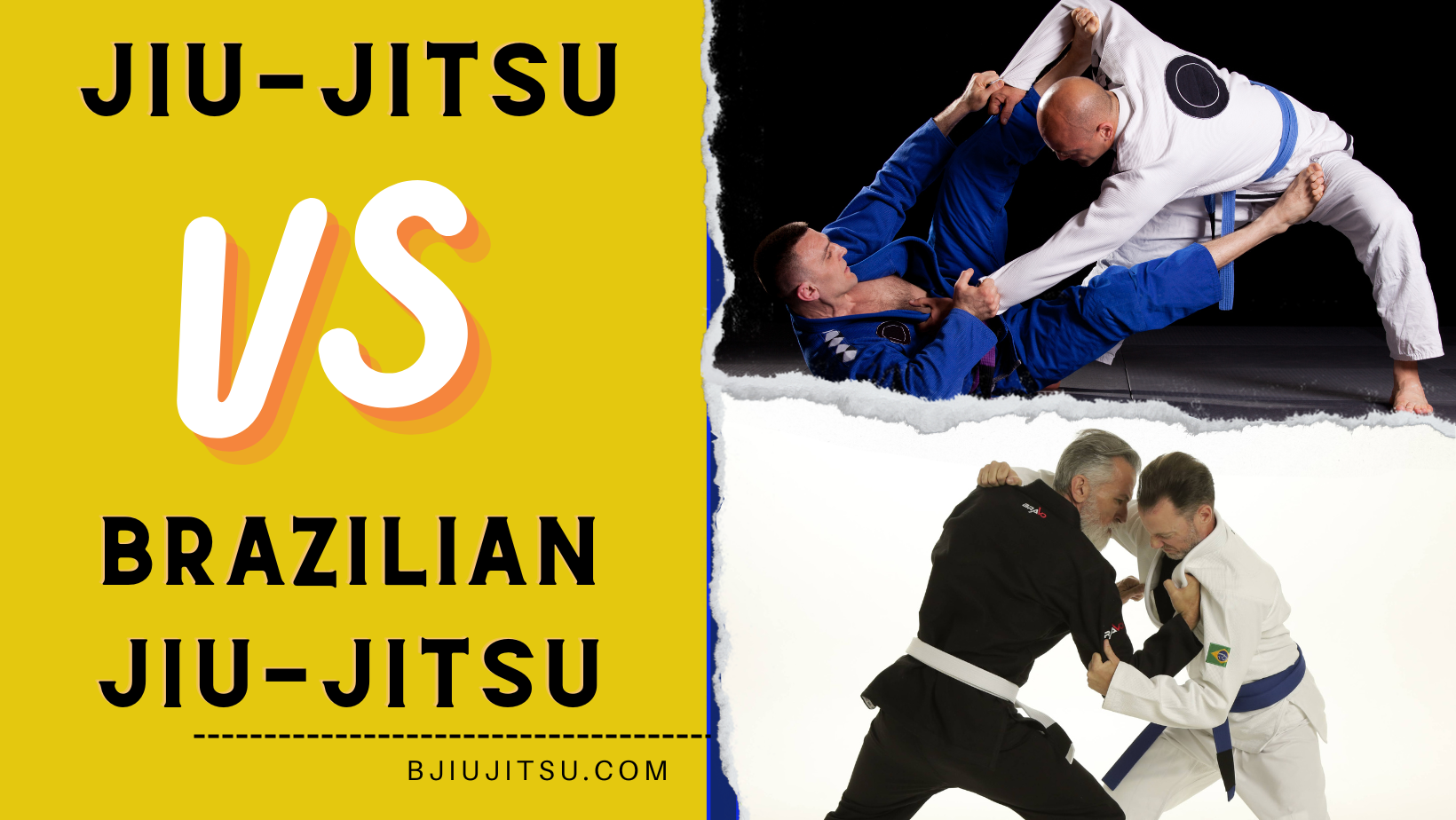


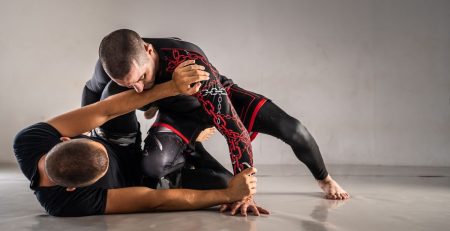




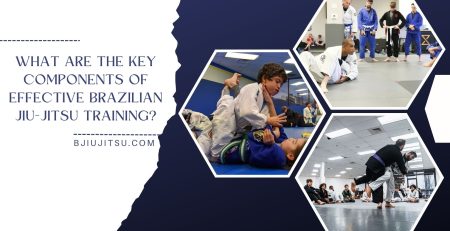
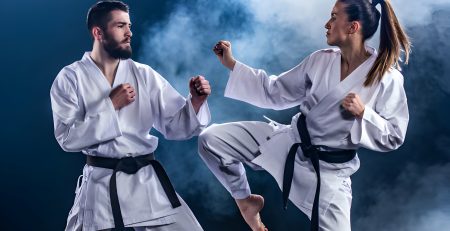

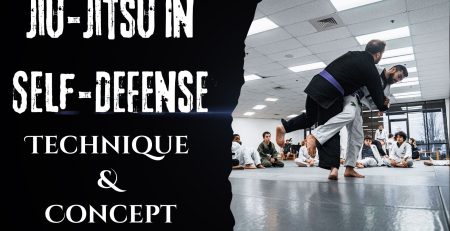


Leave a Reply
You must be logged in to post a comment.